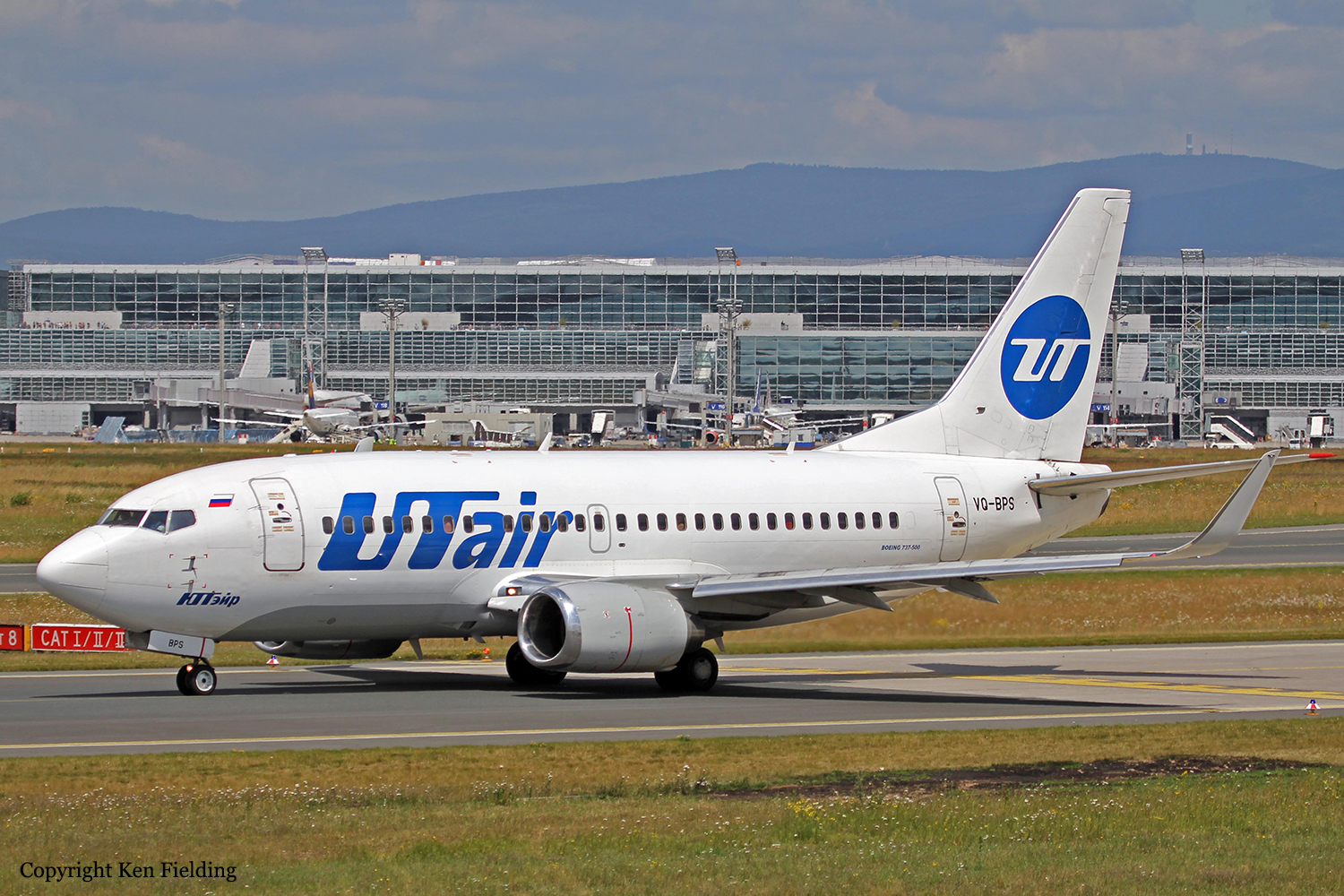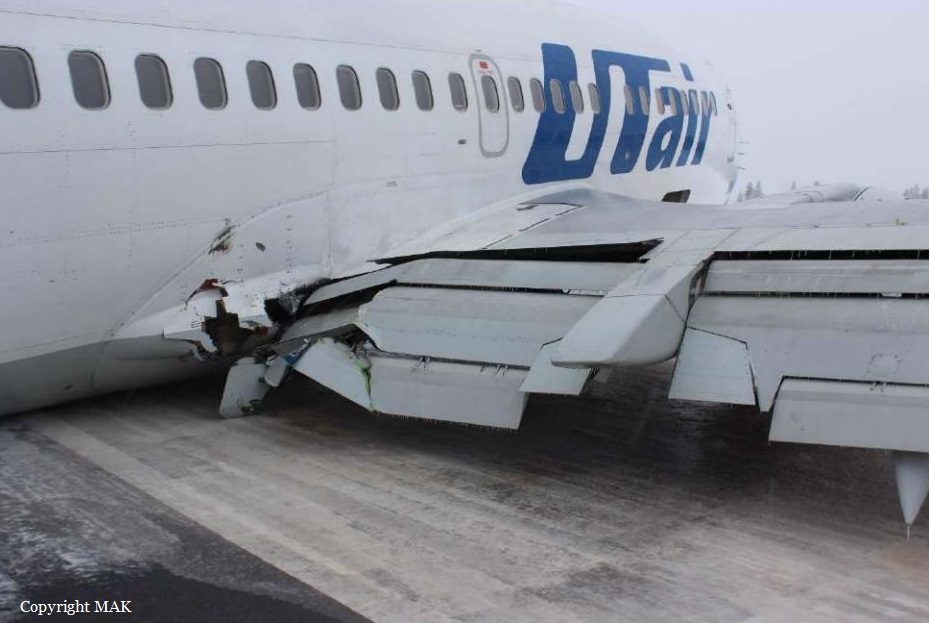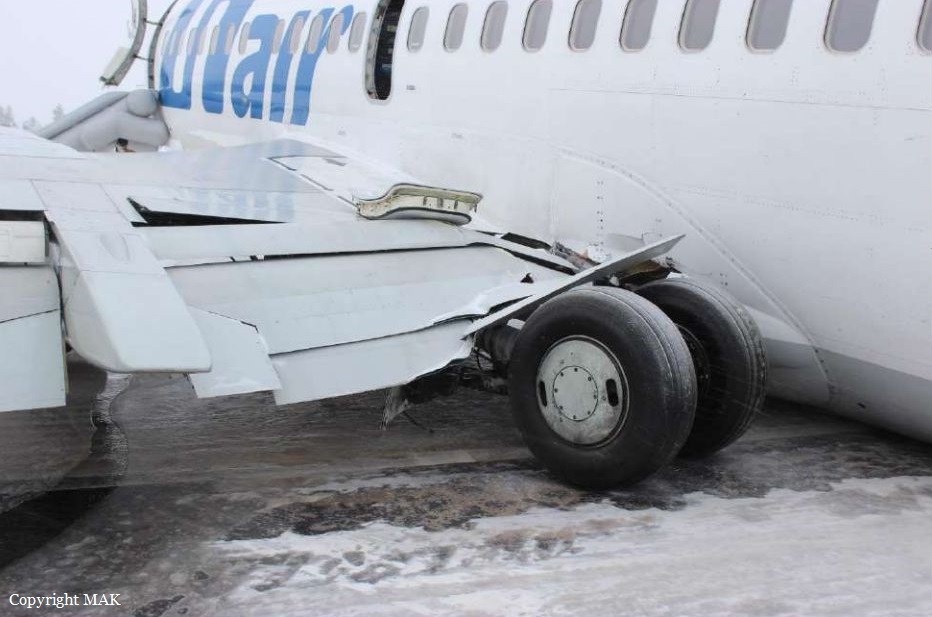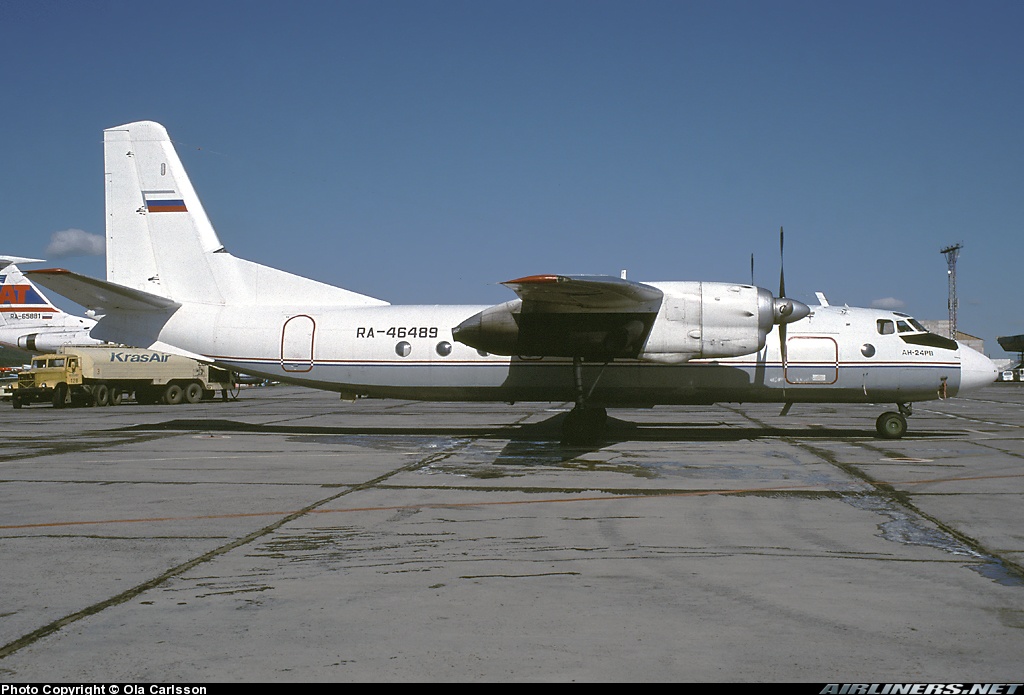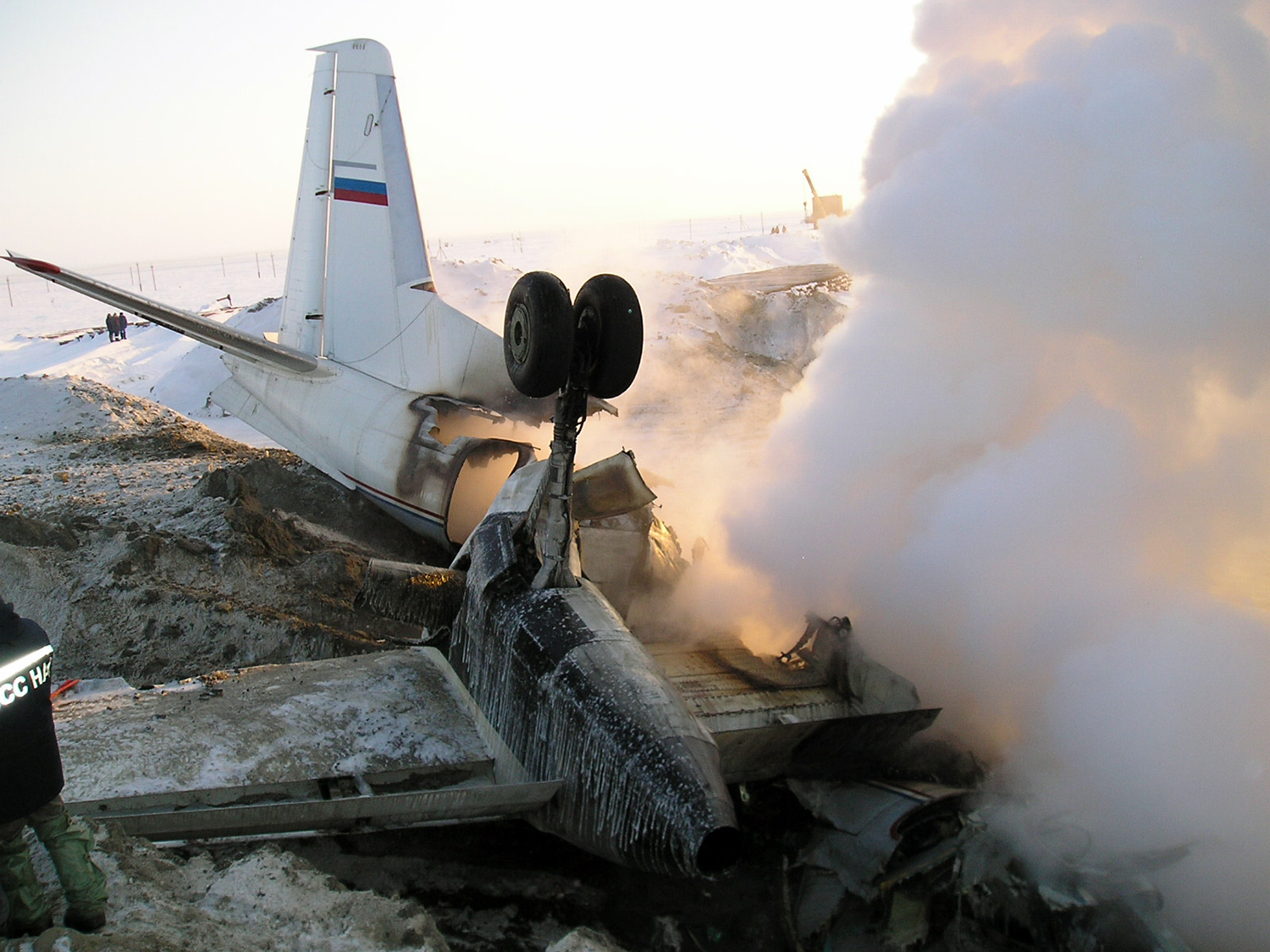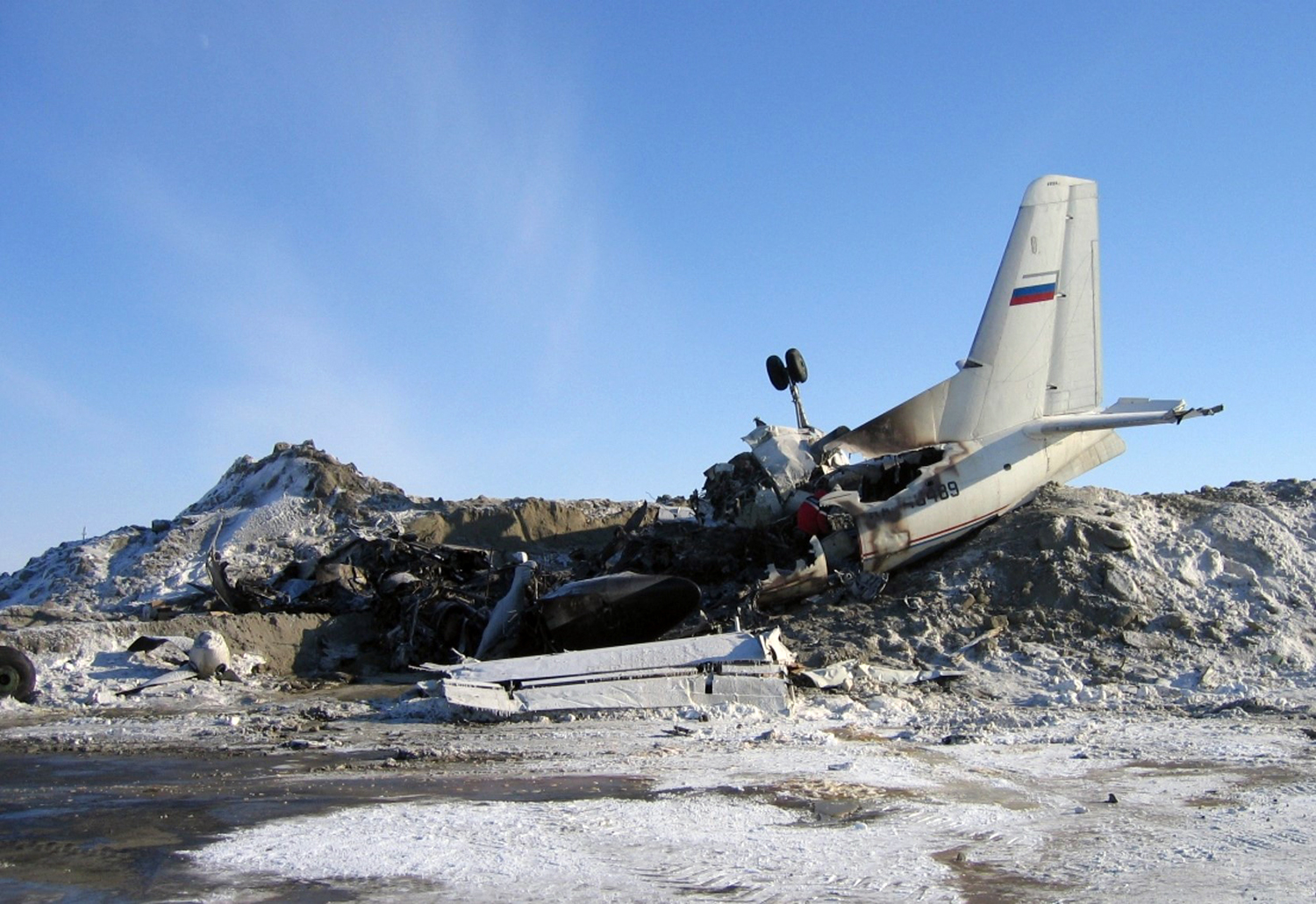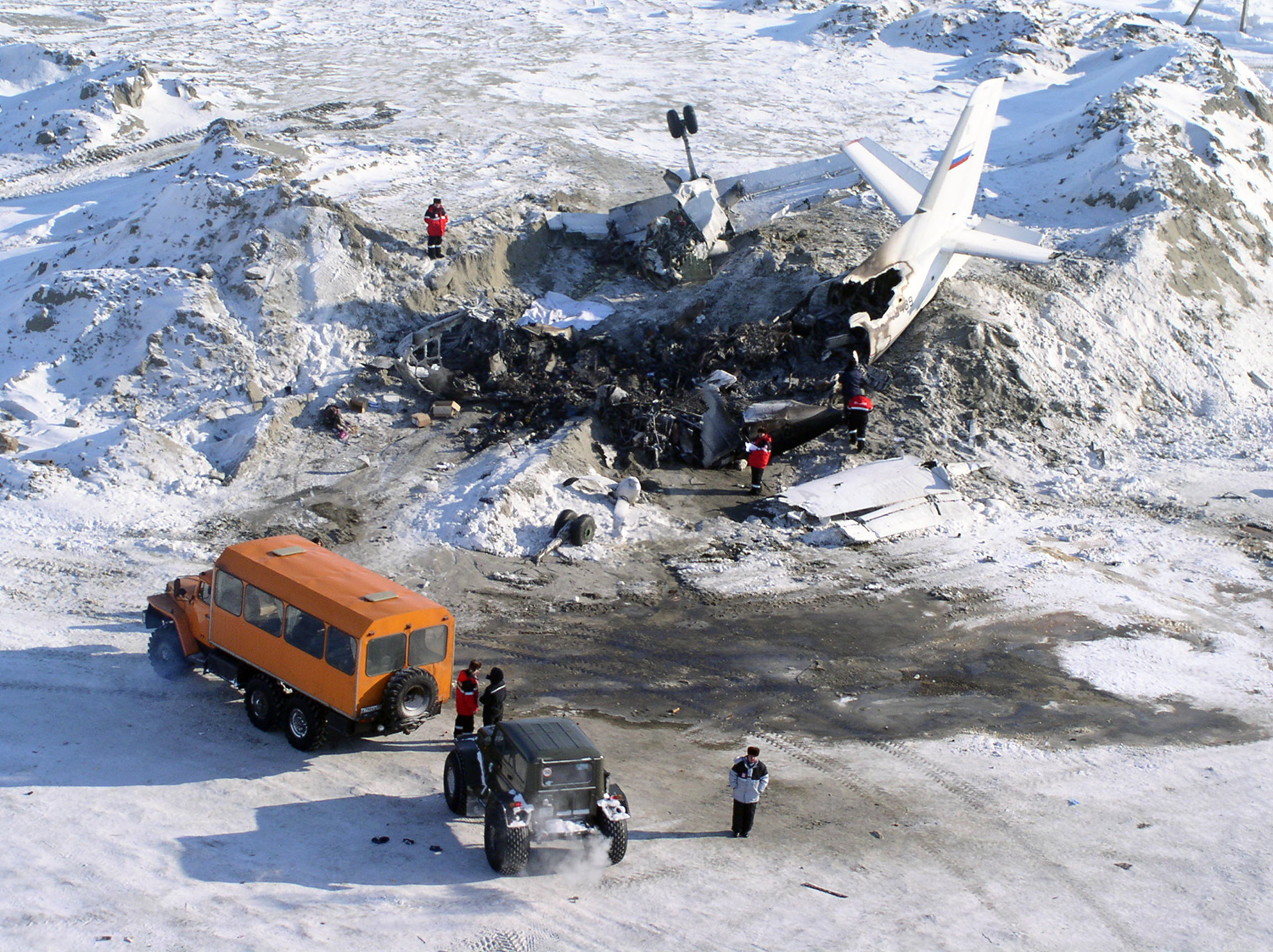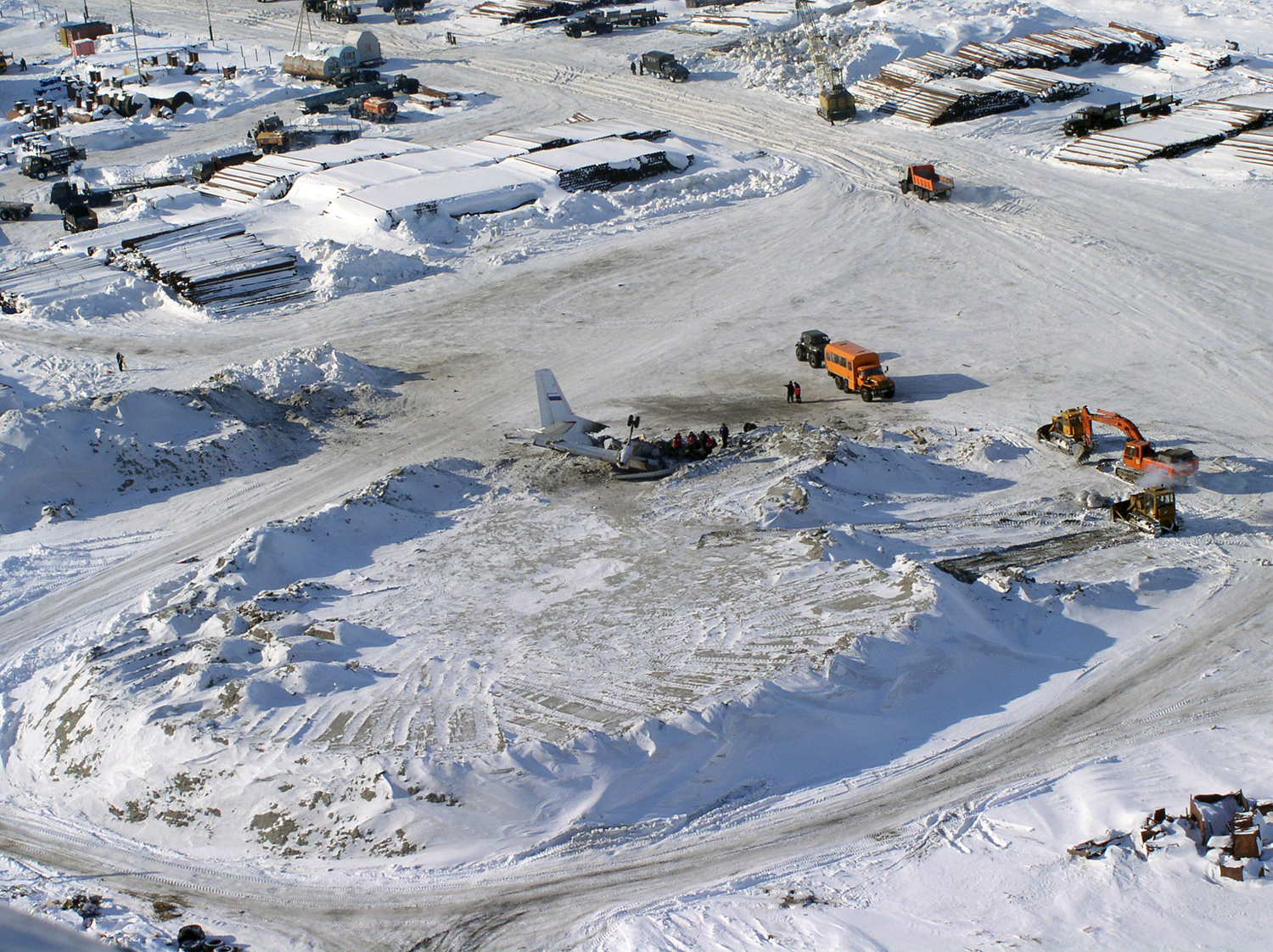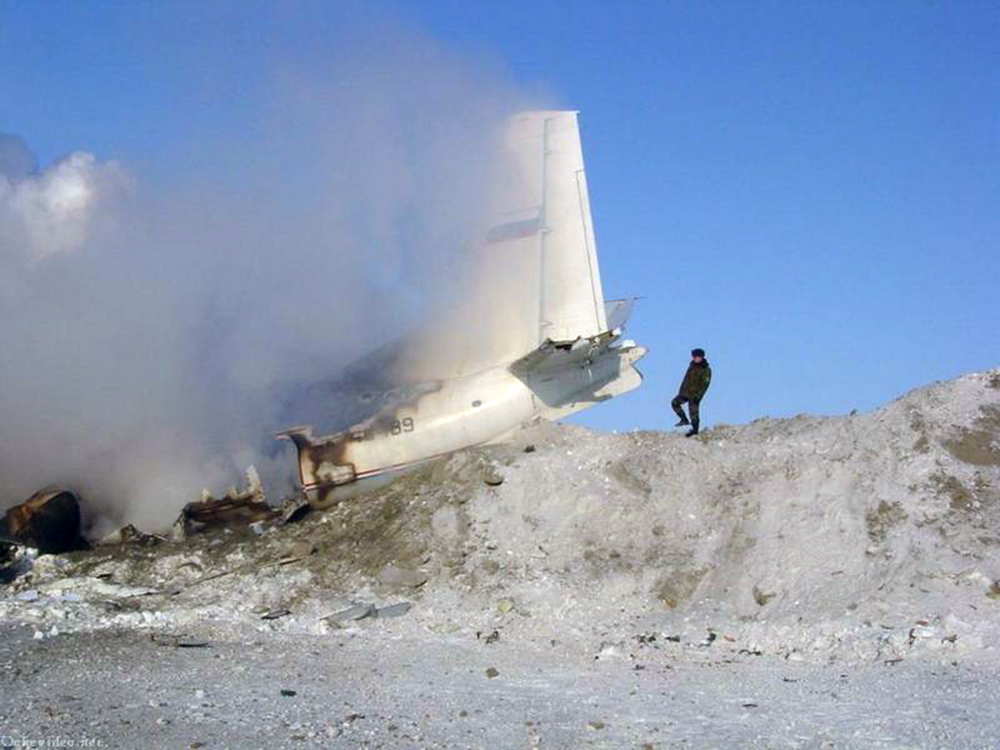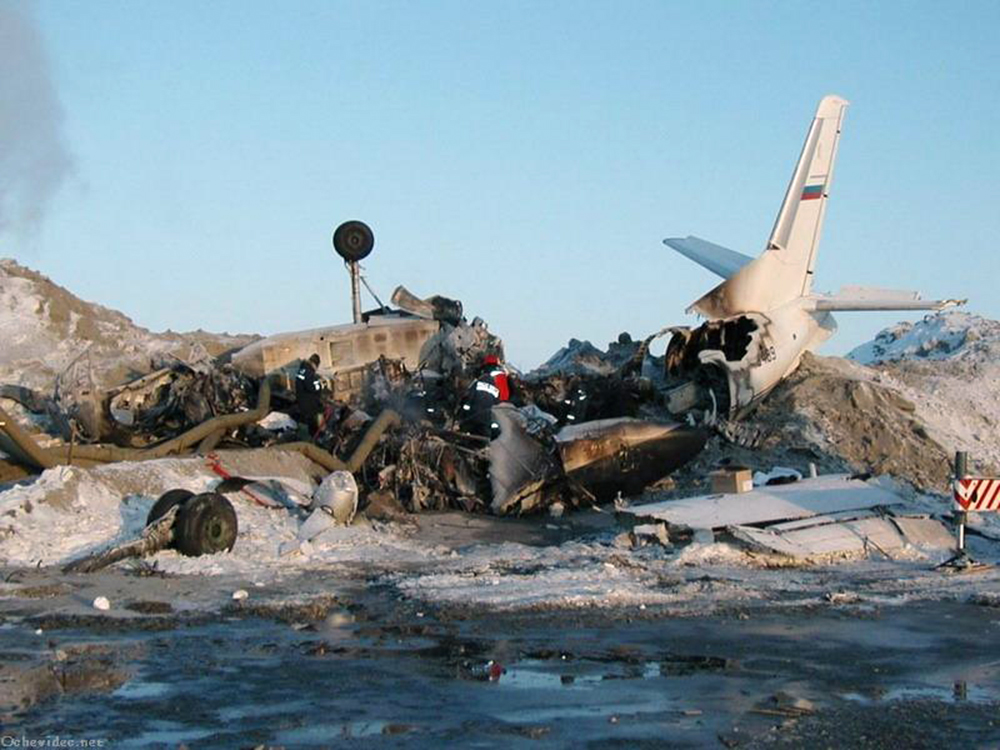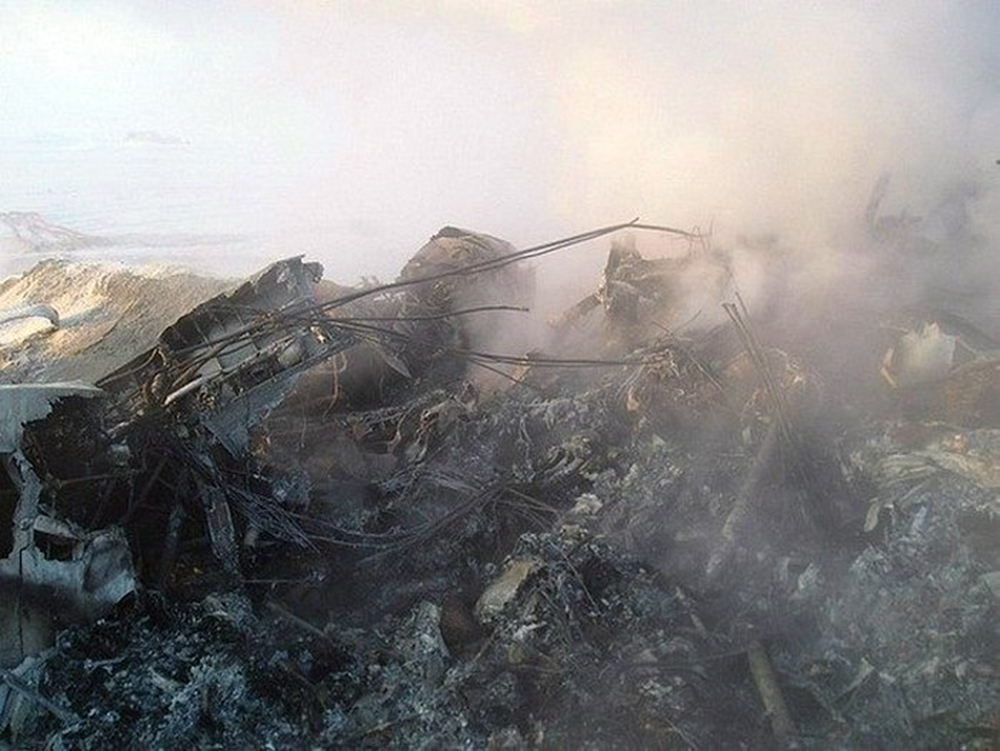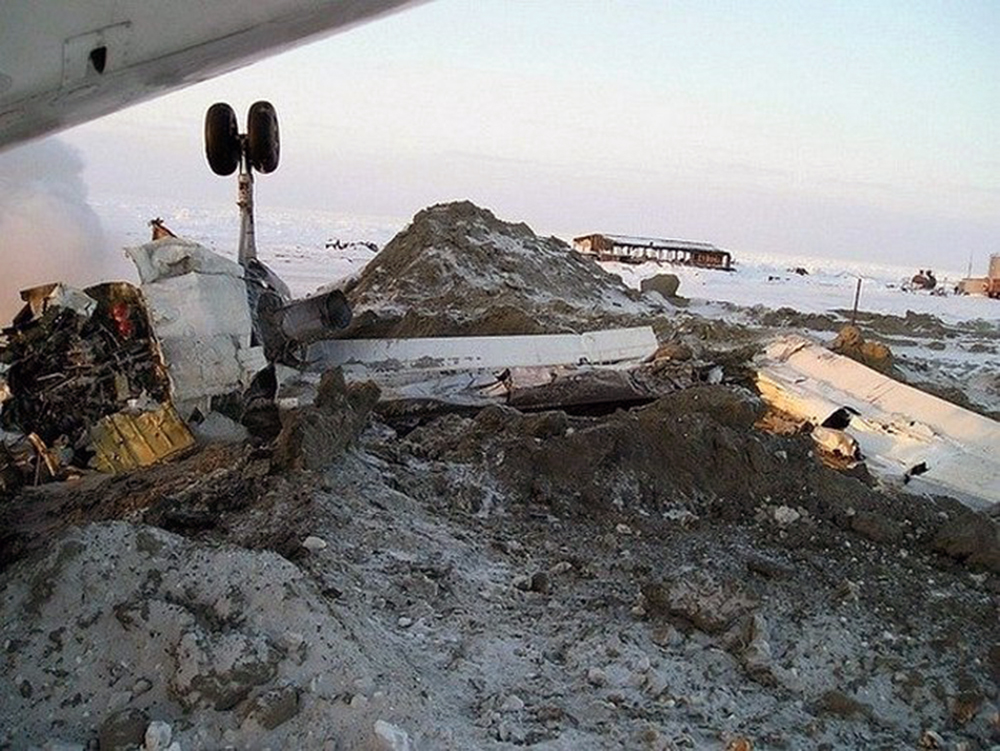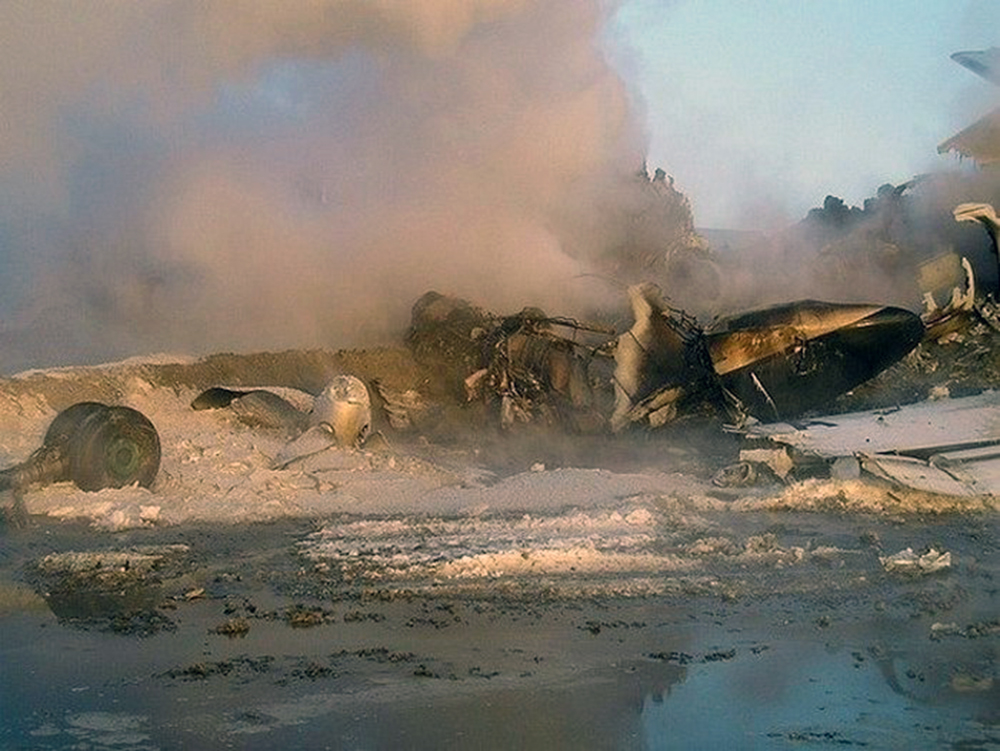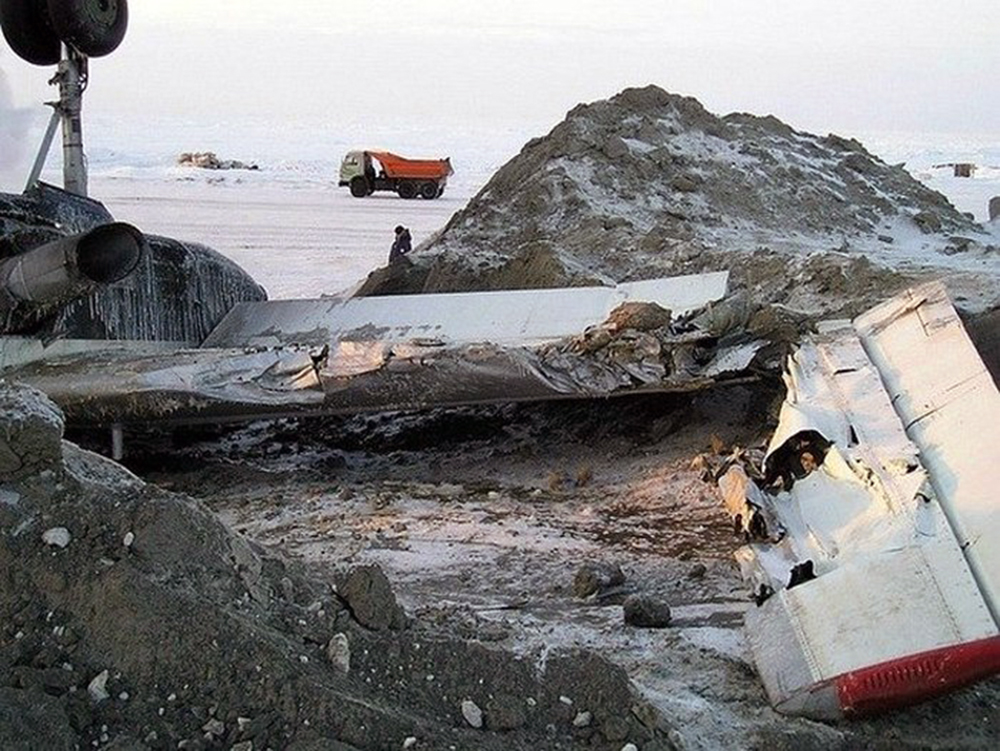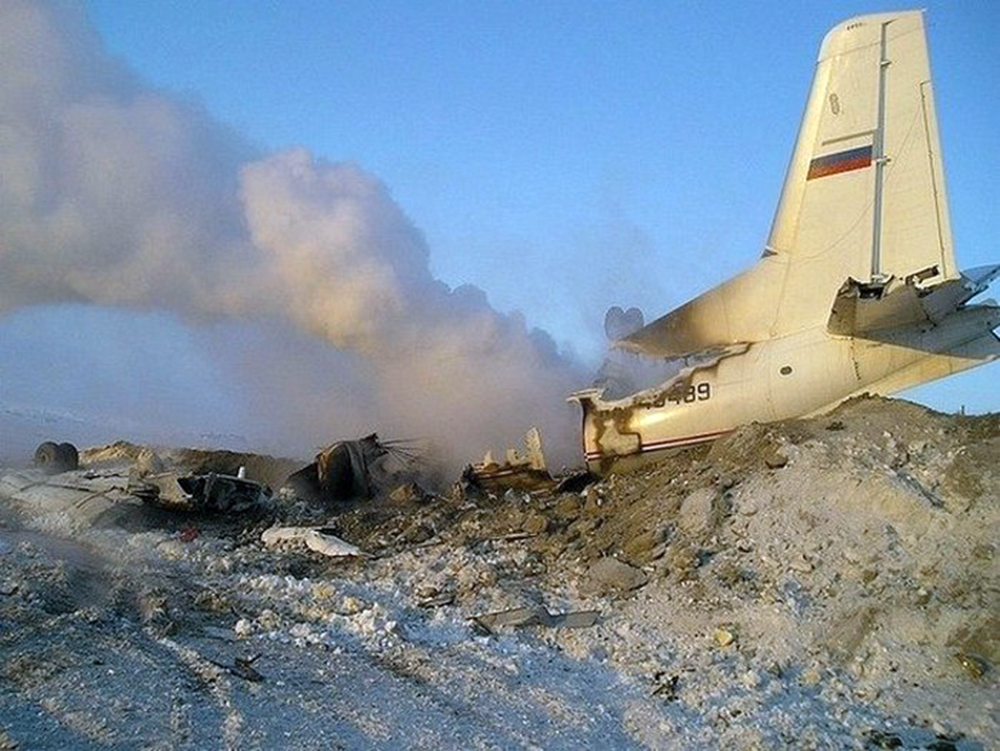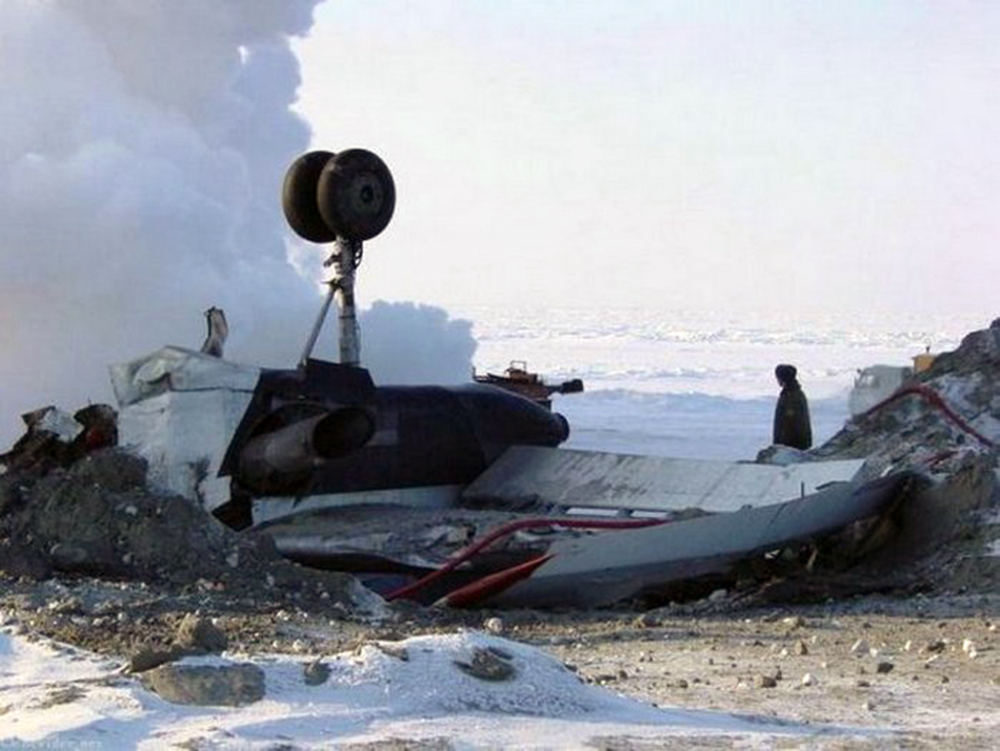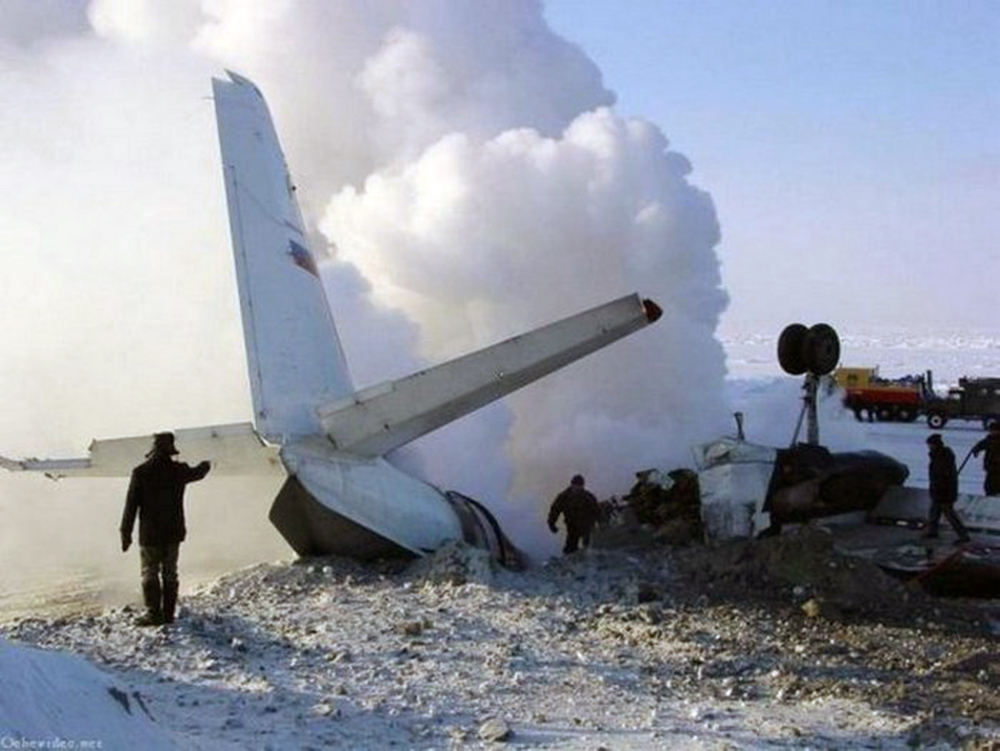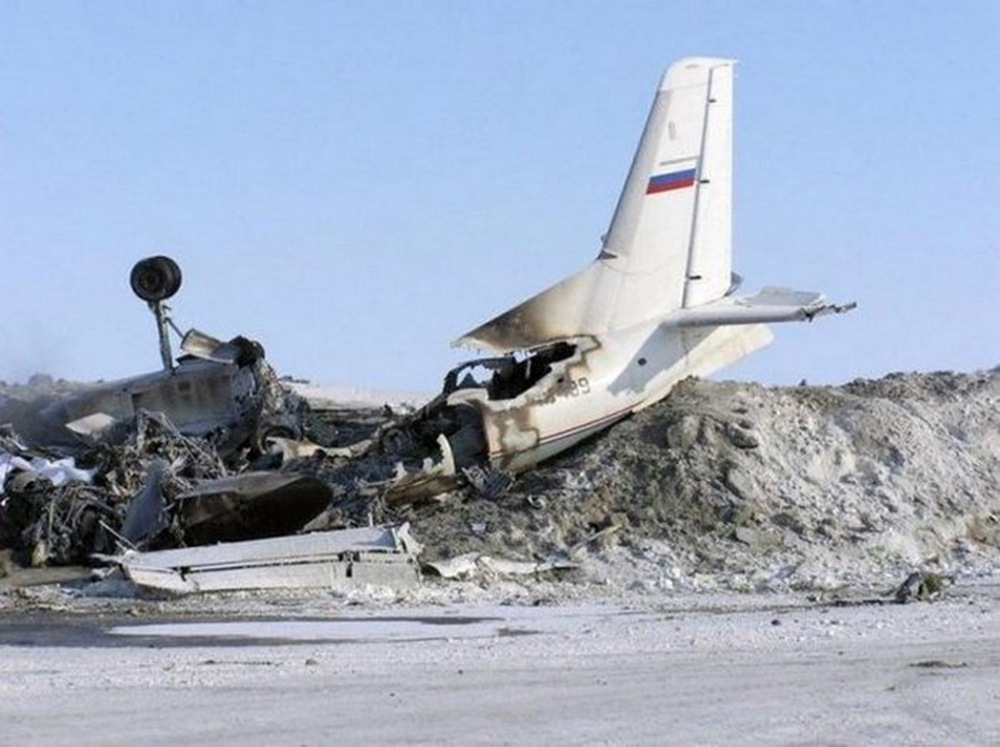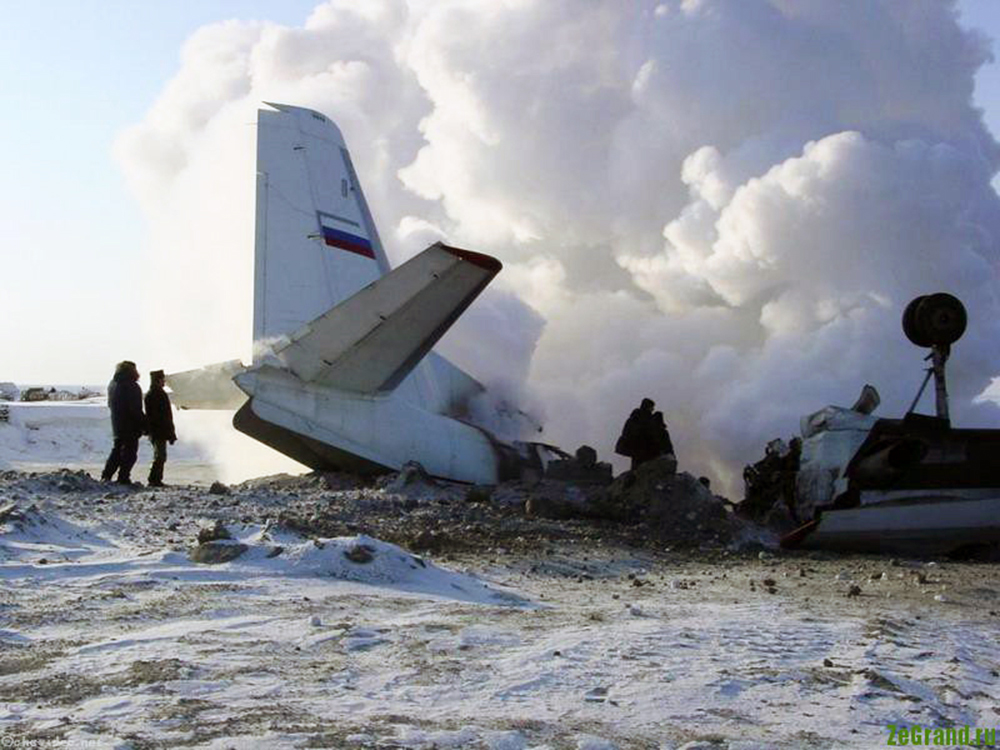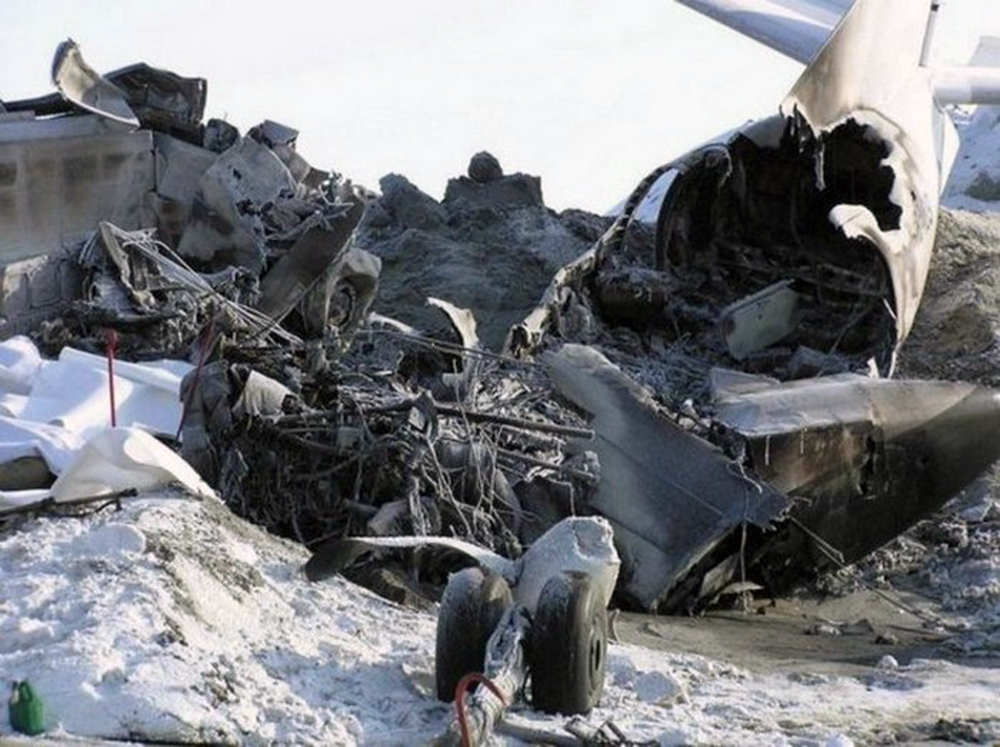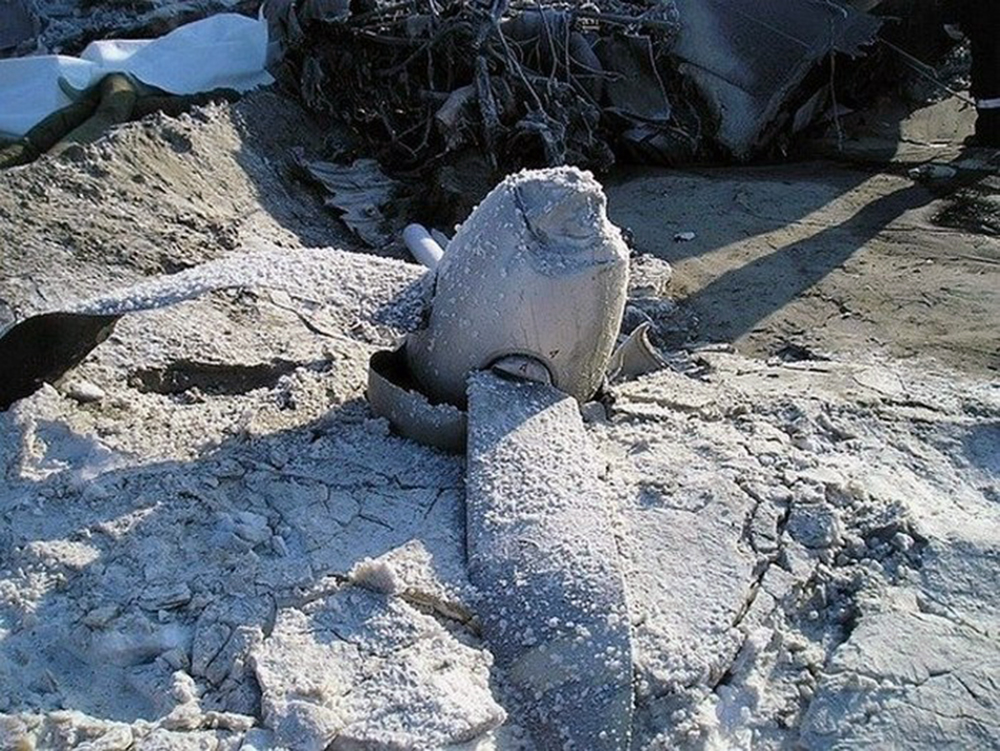Crash of a Boeing 737-524 in Usinsk
Date & Time:
Feb 9, 2020 at 1227 LT
Registration:
VQ-BPS
Survivors:
Yes
Schedule:
Moscow - Usinsk
MSN:
28909/2960
YOM:
1997
Flight number:
UT595
Crew on board:
6
Crew fatalities:
Pax on board:
94
Pax fatalities:
Other fatalities:
Total fatalities:
0
Captain / Total hours on type:
7672.00
Copilot / Total hours on type:
4989
Aircraft flight hours:
57410
Aircraft flight cycles:
29162
Circumstances:
Following an uneventful flight from Moscow-Vnukovo Airport, the crew initiated the descent to Usinsk Airport Runway 13. On short final, the aircraft hit a snow bank (1,1 metre high) located 32 metres short of runway threshold, still on the concrete zone. Upon impact, both main gears were torn off and the airplane belly landed and slid for few hundred metres before coming to rest. All 100 occupants evacuated safely and the aircraft was damaged beyond repair.
Probable cause:
The accident with the Boeing 737-500 VQ-BPS aircraft occurred during the landing as a result of a collision of the aircraft with a snow parapet 1.1 m high at a distance of 32 m to the runway threshold (within the paved section of the runway), which resulted in damage to the main landing gear and their subsequent "folding" in the process of moving along the runway.
The accident was caused by a combination of the following factors:
- the presence of contradictions in the Federal Aviation Rules for flights in the airspace of the Russian Federation, the airline's radio control system and the aircraft operational documentation regarding the need and procedure for introducing temperature corrections to the readings of barometric altimeters at low ambient temperatures;
- Failure by the operator of the Usinsk aerodrome to comply with the FAP-262 requirements for the maintenance of the aerodrome, which resulted in the presence of snow parapets on the paved section of the landing strip;
- the operator of the Usinsk aerodrome did not eliminate the shortcomings in the winter maintenance of the aerodrome, noted based on the results of the inspection by the Rosaviatsia commission on January 22, 2020;
- lack of risk assessment in the airline associated with the execution of approaches in the baro-VNAV mode in the presence of factors that impede such approaches (low ambient temperatures, snow-covered underlying surface, drifting snow (snowstorm), significant changes in the relief in front of the runway end, lack of PAPI-type lights), as well as appropriate recommendations to the crews on the specifics of such approaches, including after the transition to visual flight, and crew training;
- insufficient assessment by the crew during the preparation of the existing threats (hazard factors) and making an insufficiently substantiated decision to perform an RNAV (GNSS) approach (under the control of the autopilot in LNAV/VNAV mode) without introducing a correction for low outside air temperature in altitude overflying waypoints, which led to a flight below the established glide path;
- performing a flight along the "extended glide path" after turning off the autopilot and switching to manual piloting without attempting to enter the set glide path;
- the PIC may have had a visual illusion of a "high glide path" due to a snow-covered underlying surface, a snowstorm and the presence of a ravine directly in front of the runway end in the absence of PAPI type lights, which led to an incorrect assessment of the aircraft's flight altitude after switching to manual piloting, lack of reaction to timely and correct warnings of the co-pilot and exit to the runway end at a height significantly less than the established one.
The accident was caused by a combination of the following factors:
- the presence of contradictions in the Federal Aviation Rules for flights in the airspace of the Russian Federation, the airline's radio control system and the aircraft operational documentation regarding the need and procedure for introducing temperature corrections to the readings of barometric altimeters at low ambient temperatures;
- Failure by the operator of the Usinsk aerodrome to comply with the FAP-262 requirements for the maintenance of the aerodrome, which resulted in the presence of snow parapets on the paved section of the landing strip;
- the operator of the Usinsk aerodrome did not eliminate the shortcomings in the winter maintenance of the aerodrome, noted based on the results of the inspection by the Rosaviatsia commission on January 22, 2020;
- lack of risk assessment in the airline associated with the execution of approaches in the baro-VNAV mode in the presence of factors that impede such approaches (low ambient temperatures, snow-covered underlying surface, drifting snow (snowstorm), significant changes in the relief in front of the runway end, lack of PAPI-type lights), as well as appropriate recommendations to the crews on the specifics of such approaches, including after the transition to visual flight, and crew training;
- insufficient assessment by the crew during the preparation of the existing threats (hazard factors) and making an insufficiently substantiated decision to perform an RNAV (GNSS) approach (under the control of the autopilot in LNAV/VNAV mode) without introducing a correction for low outside air temperature in altitude overflying waypoints, which led to a flight below the established glide path;
- performing a flight along the "extended glide path" after turning off the autopilot and switching to manual piloting without attempting to enter the set glide path;
- the PIC may have had a visual illusion of a "high glide path" due to a snow-covered underlying surface, a snowstorm and the presence of a ravine directly in front of the runway end in the absence of PAPI type lights, which led to an incorrect assessment of the aircraft's flight altitude after switching to manual piloting, lack of reaction to timely and correct warnings of the co-pilot and exit to the runway end at a height significantly less than the established one.
Final Report:
